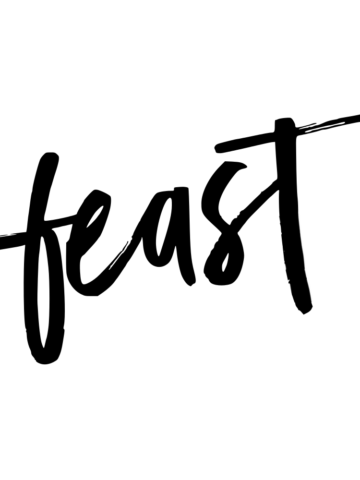Running a food blog is in simple terms, just another small business.
Like all businesses, food blogs should have multiple income streams. Not only does this earn you more money each month, it safeguards you against changes in the industry and broader market.
It's unfortunate that most food blogs rely solely on ad revenue. While this is lucrative at the moment, ads are universally hated by consumers and the ad industry operates on, let's say, shady grounds.
Food bloggers have a unique set of skills that are valuable to a number of people, including photography skills, the ability to write compelling content, and of great culinary skills.
What if instead of just cooking for yourself, you could sell your recipes as part of a comprehensive meal plan for families around your city?
Welcome to the world of Personal Chefs.
Food bloggers are uniquely positioned in this space, with dozens of recipes already put together on their blogs, with mouth-watering images. This lets a client know exactly what's being prepared, and allows them to make suggestions and alterations.
Private Chefs vs. Personal Chefs
There's a small but important distinction between being a private chef, and a personal chef.
A private chef typically has one client, making them more of an employee than an independent contractor. Actually, some cities and states will classify you as an employee even with a contract, if you meet certain criteria (only one client, required number of hours, control over how work is done). Private chefs may need to travel with the family, cater family events, and more.
Personal chefs on the other hand, offer a meal prep service to multiple clients. They have more freedom in how things are done, and are better protected from losing income due to losing a client.
Personal Chef Pricing
Going rates for personal chef services average around $250 - $300 per day. Typically, a personal chef deals with 1 client per day, 5 days per week, and cooks for each client once per week.
The actual price varies by city, depending on cost of living.
Groceries are excluded from this. A simple add-on to your services is doing the grocery shopping for the family - typically billed by the hour.
Most personal chefs offer a free 1-on-1 consultation to establish client's dietary needs and restrictions (allergies), and check in on the kitchen to ensure its usable and all needed equipment is in place (stove, type of stove, pots, pans).
Chefs will commonly bring the essentials - their own knives, and frequently used tools like blenders or dicers.
Personal Chef Incomes
At 5 clients per week and $300 per client, personal chefs stand to make around $1,500 per week, or $6,000 per month.
There are a number of expenses that come along with this. You may need to invest in some equipment to carry groceries and tools to the client location. You'll have some gas and vehicle expenses. You may also want to invest in a higher grade of kitchen equipment.
This can be a great way to build up credit card points and loyalty rewards quickly - shopping 5 days per week for a weeks worth of food for a family can easily $200 per day. This nets about $4,000 per month in purchases (which doesn't come out of your pocket). At 2% - 5% rewards, this can mean anywhere from $80 to $200 per month in cashback or "free" groceries.
As a food blogger, you don't need to go all-in on becoming a personal chef. 1-2 clients per week can add some great side income, while helping you expand your culinary skillset outside of your comfort zone. It can also build important customer service skills.
Time Requirements
At roughly an hour of cooking per meal, you can count on cooking for 5 hours for a 5 meal-per-week service, plus potentially grocery shopping time.
This is something that can vary significantly - the more experienced you become, the better you're able to prioritize and optimize your time.
There is prep work and cleaning work that needs to be done, adding "overhead" outside of just the cooking.
How you structure the meals/offering also makes a difference: making larger portions, or simpler dishes, can have a big impact on the time requirements.
Personal Chefs Association
There's an industry organization for personal chefs: https://www.personalchef.com/
Insurance
One thing to keep in mind is that accidents happen. Cuts, burns, slips, fires and more are common even a place you're familiar with.
The personal chefs association has an insurance program for its members, catered specifically to these needs: http://personalchefinsurance.com/


Wouter Schipper says
The terms personal chef and private chef are indeed different. But since every chef tries to rank for both private chef and personal chef, it is used for a variety of services.
for example, I use the term personal chef in my title and mix it up with the term private chef in articles or blogs. I try to introduce the term catering chef (which suits my company more). But with no one using that keyword, it is not very useful.
A catering chef is someone who specializes in in-home catering or small events and cooks on location.
http://www.cheflekker.com
Skylar says
You mentioned that "personal chef" and "private chef" are different but didn't elaborate on the distinction between the two - can you explain that?
Wouter Schipper says
Hi Skylar,
Thank you for your reply. As mentioned in the article, a private chef's main focus on one client and a personal chef service designed for multiple clients. Both focus on meal prep. That said both of them might offer a catering service on the side.
A catering chef only focuses on parties and event catering on location. And does not offer a meal prep service. I got into more details about the catering chef service here
https://www.cheflekker.com/catering-chef-vancouver/